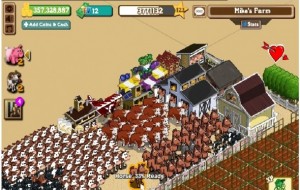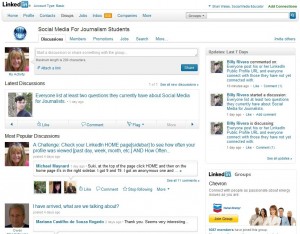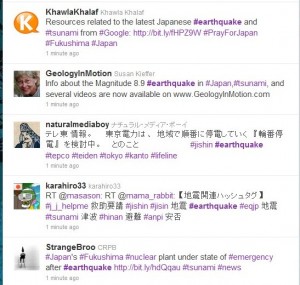 So what do you know about Farmville?
So what do you know about Farmville?
For most readers of this blog — i.e., serious or somewhat serious business types learning how to use social media marketing — Farmville is a nuisance, a game played by people with nothing but time on their hands.
However, it’s just possible that “we” are wrong. According to Feb 18 stats, Farmville has 80 million users; 15% of Facebookers play Farmville, and 31 million do it daily.
The implication for marketers is clear. Your target consumer could be on Farmville and perhaps you need to be there as well. One friend recently told me that her mom spends HUNDREDS OF DOLLARS, i.e., Real American Dollars playing Farmville to buy “things.”
Knowing nothing about Farmville myself, I called upon my British colleague Mike Maynard, one of those 31 million daily players. Here’s one thing he said:
Imagine American kids learning to speak English; cool, awesome, mega, outrageous and heavy; man… If you notice kids getting up really early in the morning and saying Ar a lot; don’t worry they are getting up to do the Farmville milking. Farmville cash – is it real money?
. . . and here is the rest:
 Farmville cash: How “real” is it?
Farmville cash: How “real” is it?
Guest Post by Michael Maynard
Zynga the makers of Farmville and other games running via Facebook is in the news trying to raise up to $500M in investment and analysts now value Zynga at $10 Billion.
I checked the price of Farmville cash and Farmville coins this morning:
- For comparison I have chosen 115 FV cash for $23 and also 33,500 coins for $23.
- You can get it cheaper by buying 650 FV cash for $115 and people are buying in that sort of quantity on a weekly basis.
But is it like real money and should governments regulate Zynga and its virtual money?
It is certainly big business when you have a license to print money! It is thought though that only the Federal Reserve in the US and the Bank of England in the UK have a license to print money; so is this ‘real’ money? If it is like real money, could you go to prison for stealing ‘virtual’ money?
Zynga also has an online poker game, and hacker Ashley Mitchell from the UK hacked the Zynga server stealing 400 billion chips worth around $12,000,000, which he set about selling cheap on the black market. He sold them for a fraction of their “value’”and still made $100,000 from a third of them. Should he go to prison for stealing virtual money? It’s not real is it? The judge at his trial in the UK thinks it is.
I’ve been writing my Farmville Millions blog articles telling people how to make millions of coins at Farmville with screen shots showing that I have done it.
Now I am working on the Farmville Billionaire. Yes, I am going to make a cool 1,000,000,000 coins:
- 33,500 coins according to Zynga cost $23 and so what are a billion worth?
- I make it $686,567 and so far I have over 377,000,000 of them.
- I have made $258,835 and change… well over $12,000 a day.
It’s not taxable is it?
Bugger… I have read that there is a black market for most virtual money in some countries; but I see no way of transferring it to someone else; so it isn’t money.
If Zynga made FV cash and coins interchangeable and then allowed people to buy other things with the virtual money, that would be different. If I could buy a state of the art laptop for say 13,000,000 coins; worth $13,000, I could just about afford that today and I could buy a few for my family over the course of the week. I wouldn’t mind an Android phone, and a new car would be nice. I think 100,000,000 coins for a car is fair — they are worth $68,000 at Zynga prices.
Zynga did offer me FV cash at a discount, though, just after I checked out the prices. They offered me 115 FV cash for $10, and so even they don’t think it’s worth the money.
I suppose some people would say it is worth whatever people are willing to pay for it.
I know that people do go in stores and buy game cards in the USA for amazing amounts of money; I’m amazed anyway! In the UK we are expected to use a credit or debit card. 115FV cash for $10; that’s about £6.00 and what would I get for it? I could have a bakery and make loads of stuff and sell it for coins and an orchard for my trees!
Cool… I have two orchards already though and I have a winery; I don’t really have the time to run a bakery.
If you still think Farmville is silly with these amounts of money involved, consider the themes. The French theme not long ago had American kids asking for croissants for breakfast and learning to Parlez Français; we also had a Tuscan wedding theme. I still have a “holiday tree” on my farm – Zynga talk for a Christmas tree; I think and we are into a Valentine’s theme now.
There is also farming in the English countryside theme coming soon. Imagine American kids learning to speak English; cool, awesome, mega, outrageous and heavy; man… If you notice kids getting up really early in the morning and saying Ar a lot; don’t worry they are getting up to do the Farmville milking. If they offer you the keys to their combine harvester and sing, ‘I got a brand new combine harvester and I’ll give you the key all day’ they’re hooked!
Zynga games like Farmville appeal to different types of personalities. The more macho go for mafia wars and it takes a particular type of personality to be good at Farmville. Bill Gates and Mark Zuckerberg would have no chance. Bill Gates says young people should start off flipping burgers and work their way up, but he never did that. He started by getting mommy on the board of IBM to give him a hand up – right to the top! I have flipped burgers; it was only for a few hours but I did deal with a drunken security guard. It taught me a lesson: people look down on you as a burger flipper. The next day I had him fired on my way to the office… They don’t teach that stuff in Harvard…
People who have learned the hard way and are used to starting with nothing can take that small bit of land they give you in Farmville and work their way up to a big farm and a billion coins.
I need 69 friends for a larger farm; I’ll get there, we work our way up by being friendly and helpful. If you walk all over people or are narcissistic, as many people are on Facebook; then you languish at the bottom. I need 100,000 XP to go up a level and many of my neighbours don’t have 100,000 XP in total. I will actually get 10,000,000 XP when I spend my billion on mansions and things; it a shame I can’t buy a train…
I had a message from one of my neighbours this morning, it said “hey hi,” she is only 13 years old; her vocabulary will develop. I will have to send her presents to help her get started; she isn’t doing very well. If Bill Gates’ mommy can help him become a billionaire then I don’t see why I should engage in a little nepotism and send a few Farmville cows to my great niece. I wonder if she knows I’m her great uncle.
I’ll be back…
In the meantime you can check out Mike’s blog-with-a-blog: In which you get to meet Mike Maynard and his Farmville strategies
And, of course, tell us your own Farmville stories and tips.
 There’s nothing like commenting on someone’s blog post to get the ball rolling, i.e. building online relationships. As part of re-strategizing my own blogging, I am revisiting my first posts to republish those with content that’s as relevant today as it was when I first began.
There’s nothing like commenting on someone’s blog post to get the ball rolling, i.e. building online relationships. As part of re-strategizing my own blogging, I am revisiting my first posts to republish those with content that’s as relevant today as it was when I first began.  Guest Post by Ted Schnell
Guest Post by Ted Schnell






















